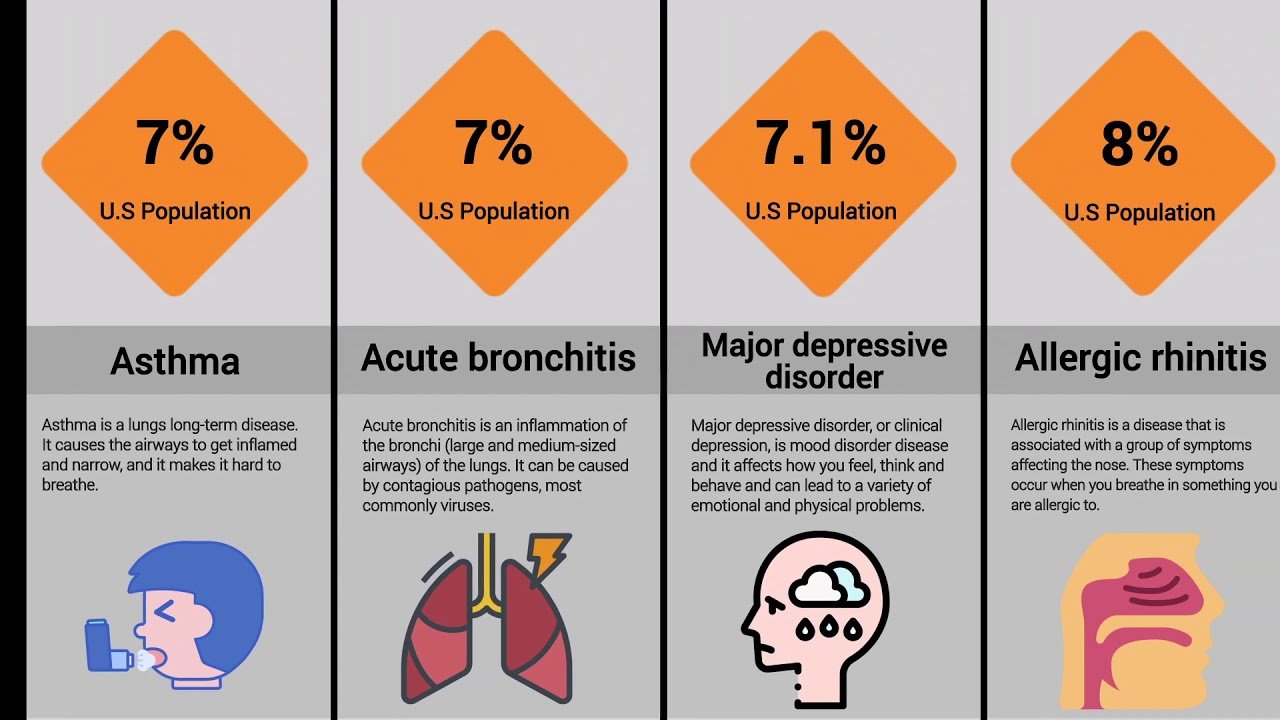Introduction
The United States, with its diverse population and complex healthcare system, faces a broad spectrum of diseases. From chronic conditions to infectious diseases, understanding the various types of diseases prevalent in the country is crucial for public health, prevention, and treatment strategies. This blog post delves into different categories of diseases in the USA, highlighting key issues, statistics, and current trends.
Chronic Diseases
a. Cardiovascular Diseases
Cardiovascular diseases (CVDs) are the leading cause of death in the USA. This category includes coronary artery disease, hypertension, heart failure, and stroke. Risk factors such as high blood pressure, high cholesterol, smoking, and diabetes contribute significantly to the prevalence of CVDs. Public health initiatives focus on lifestyle modifications, such as healthy eating and regular exercise, to mitigate these risks.
b. Diabetes
Diabetes, particularly Type 2 diabetes, is a major concern. This condition affects how the body processes glucose, leading to high blood sugar levels. Contributing factors include obesity, sedentary lifestyle, and genetics. Management involves lifestyle changes, medication, and regular monitoring of blood glucose levels.
c. Chronic Respiratory Diseases
Chronic respiratory diseases, including asthma and chronic obstructive pulmonary disease (COPD), affect millions of Americans. Asthma is often triggered by environmental factors and allergens, while COPD is commonly caused by smoking. Both conditions require ongoing management and avoidance of triggers.
Infectious Diseases
a. Influenza
Seasonal influenza, commonly known as the flu, affects a significant portion of the population each year. Influenza viruses mutate frequently, which is why annual vaccination is recommended. Flu outbreaks can lead to serious complications, especially in vulnerable groups such as the elderly and those with chronic conditions.
b. COVID-19
Since its emergence, COVID-19 has had a profound impact on public health in the USA. Caused by the SARS-CoV-2 virus, COVID-19 has led to widespread illness and significant changes in daily life. Vaccination and public health measures continue to play a critical role in managing the spread of the virus.
c. Sexually Transmitted Infections (STIs)
STIs, including chlamydia, gonorrhea, and syphilis, remain prevalent in the USA. These infections can have serious health implications if left untreated. Education on safe sex practices and regular testing are key strategies for prevention and control.
Autoimmune Diseases
a. Rheumatoid Arthritis
Rheumatoid arthritis (RA) is a chronic autoimmune disorder that primarily affects the joints, leading to pain and disability. The exact cause of RA is unknown, but it involves an immune system attack on healthy joint tissues. Treatment focuses on managing symptoms and slowing disease progression.
b. Lupus
Lupus is another autoimmune condition that can affect multiple organs, including the skin, joints, kidneys, and heart. Symptoms vary widely, making diagnosis challenging. Management often involves medications to control inflammation and immune response.
Cancer
Cancer remains a major health concern, with various types affecting different parts of the body. The most common cancers in the USA include breast cancer, lung cancer, prostate cancer, and colorectal cancer. Advances in early detection, treatment, and personalized medicine are improving outcomes for many patients.
Neurological Diseases
a. Alzheimer’s Disease
Alzheimer’s disease is the most common form of dementia, characterized by progressive memory loss and cognitive decline. Research into the causes and treatments for Alzheimer’s is ongoing, with a focus on early diagnosis and potential therapeutic interventions.
b. Parkinson’s Disease
Parkinson’s disease affects movement control, leading to tremors, stiffness, and difficulty with coordination. While there is no cure, treatments aim to manage symptoms and improve quality of life.
Conclusion
The landscape of diseases in the USA is diverse and complex, with chronic diseases, infectious diseases, autoimmune disorders, cancer, and neurological conditions each presenting unique challenges. Public health efforts continue to evolve, focusing on prevention, early detection, and effective management to address these health issues. Staying informed and proactive about health can make a significant difference in individual and community well-being.
